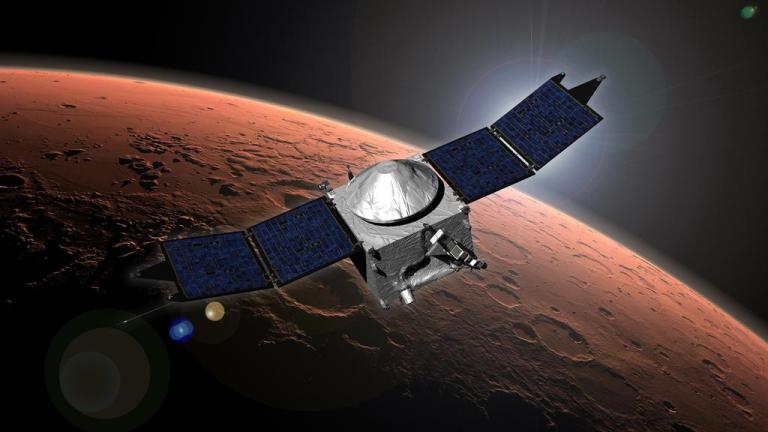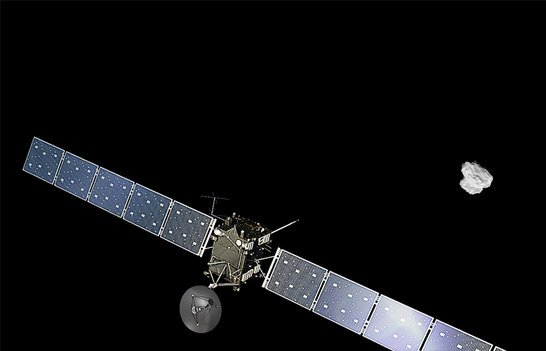
WASHINGTON (PTI): If planets had personalities, Mars would be a rock star, according to preliminary results from NASA's MAVEN spacecraft.
Mars sports a "Mohawk" of escaping atmospheric particles at its poles, "wears" a layer of metal particles high in its atmosphere, and lights up with aurora after being smacked by solar storms, researchers said.
The Mars Atmosphere and Volatile Evolution (MAVEN) spacecraft was launched on November 18, 2013, to discover how the Red Planet lost much of its atmosphere, transforming its climate from one that could have supported life billions of years ago into its present cold and barren state.
Atoms in the Martian upper atmosphere become electrically charged ions after being energised by solar and space radiation, researchers said.
Because they are electrically charged, these ions feel the magnetic and electric forces of the solar wind, a thin stream of electrically conducting gas blown from the surface of the Sun into space at about a million miles per hour.
The solar wind and more violent solar activity, such as solar flares and Coronal Mass Ejections, have the ability to strip away ions from Mars' upper atmosphere through electric and magnetic forces generated by a variety of mechanisms, causing the atmosphere to become thinner over time.
MAVEN's goal is to discover which mechanisms are most prominent for atmospheric loss, and to estimate the rate at which the Martian atmosphere is being eroded away.
"MAVEN is observing a polar plume of escaping atmospheric particles," said Bruce Jakosky of the University of Colorado, Principal Investigator for MAVEN.
"The amount of material escaping by this route could make it a major player in the loss of gas to space," Jakosky said.
Theoretical models had predicted that the electric field generated by the incoming solar wind could drive ions in the direction of one pole or the other, creating a polar plume of escaping ions.
"When tracing particle trajectories in the models, the plume looks a bit like a 'Mohawk'," said David Brain of the University of Colorado, working on the MAVEN mission.
MAVEN has also detected a long-lived layer in the electrically charged upper atmosphere (the ionosphere) of Mars made up of metal ions (iron and magnesium) that come from incoming solar-system debris, such as comet dust and meteorites.
The incoming material is heated up by the atmosphere as it enters, burns up and vaporises, and even ionises.
"MAVEN had previously detected the metal ion layer associated with dust from the close passage of Comet Siding Spring last October," said Jakosky.
"When MAVEN did its first 'deep dip' campaign in February, and lowered the closest point of the spacecraft's orbit to around 125 kilometres altitude, we immediately detected metal ions that still resided in the upper atmosphere.
"As there was no comet encounter at around that time, this must be the long-lived layer that we expect to be present," said Jakosky.
 Previous Article
Previous Article Next Article
Next Article












The Indian Air Force, in its flight trials evaluation report submitted before the Defence Ministry l..
view articleAn insight into the Medium Multi-Role Combat Aircraft competition...
view articleSky enthusiasts can now spot the International Space Station (ISS) commanded by Indian-American astr..
view article